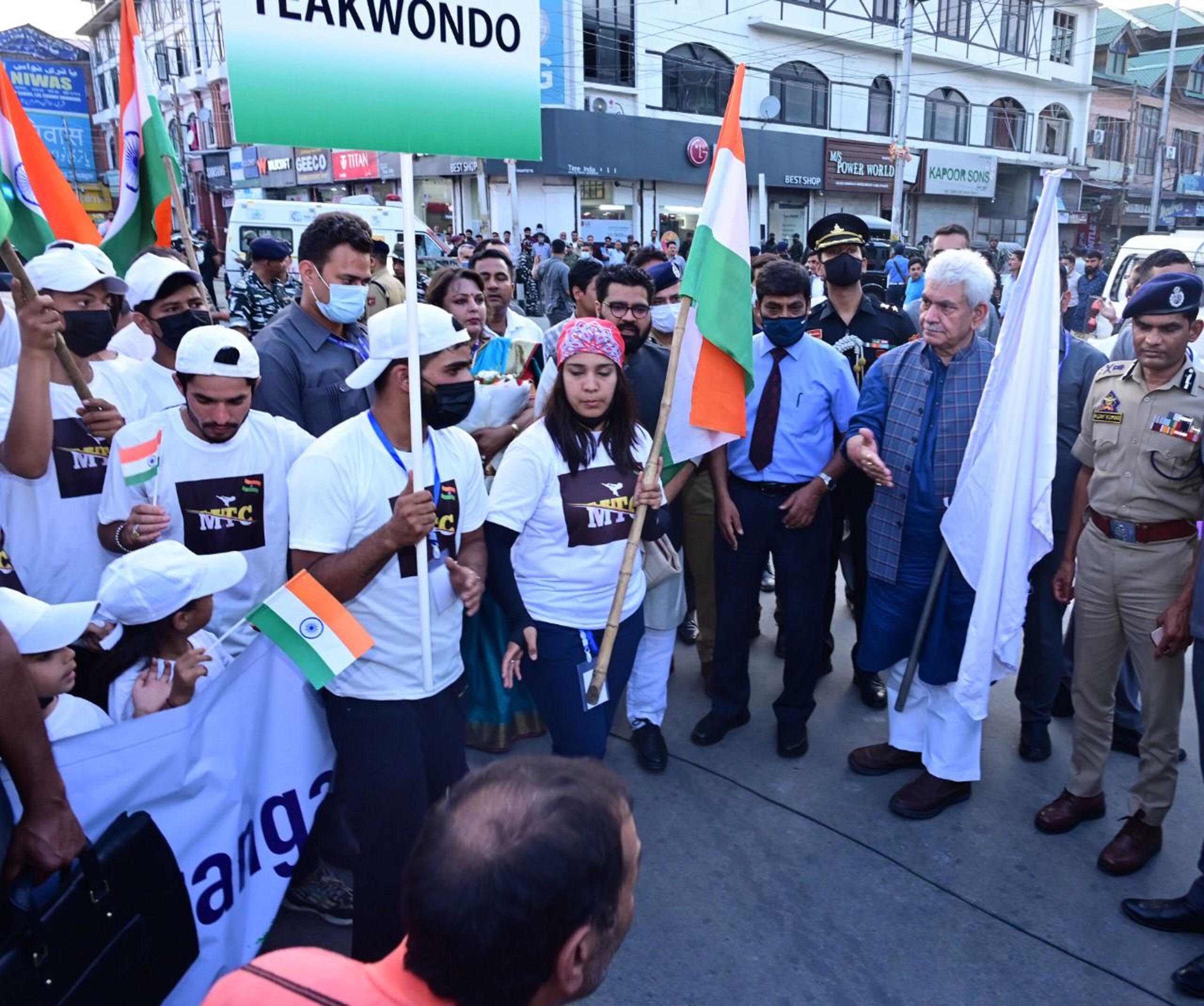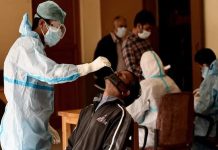
Though an uneasy peace has held in the Valley since the Article 370 was revoked, people are far from reconciled to the loss of autonomy as a fait accompli. While mass protests may have abated, the overall violence hasn’t. A report by Riaz Wani
On the face of it, Jammu and Kashmir looks like any other normal place three years after the revocation of Article 370 that granted the region a special position within the Indian Union. Kashmir Valley is no longer a witness to frequent protests, stone-pelting and shutdowns. Separatist politics has all but disappeared. Tourism is booming, with over one crore tourists having visited the union territory in the last six months. Tourists are also visiting the hitherto no-go zones near the border with Pakistan. But does this constitute normalcy? Apparently yes. But look deeper, and the situation appears contrary to its outward appearance. While mass protests may have abated, the overall violence hasn’t.
Giving a break-up of the violence over the last three years, Additional Director General of Police, Kashmir zone, Vijay Kumar recently said that over 500 militants have been killed in the period, besides 174 security personnel and 110 civilians.
J&K Police, however, acknowledges a redeeming difference in the security scenario since the withdrawal of the erstwhile state’s special constitutional position. Sharing the data on its Twitter handle, the police said that from August 5, 2016 to August 4, 2019 the number of law-and-order incidents reported in the Valley stood at 3,686 while only 438 such incidents were reported from August 5, 2019 to August 4, 2022. Similarly, 290 security personnel and 191 civilians were killed in the previous three years.
“The number of civilians killed in terror incidents is on a decline,” the ADGP Vijay Kumar said. “Once the total number of terrorists in Kashmir come down below 50, number of civilian killings will certainly decrease.”
Muted celebration
J&K witnessed a muted celebration of the third anniversary of the withdrawal of Article 370. Kashmir Valley remained calm on the day and there was no call for hartal – albeit shops in parts of Srinagar remained closed.
Workers of the People’s Democratic Party, led by its president Mehbooba Mufti staged a protest at Lal Chowk in Srinagar to mark the anniversary. Addressing the protest, Mehbooba said August 5 was a black day for the entire country.
“Our constitution and our flag were taken from us unconstitutionally and illegally. This has harmed not just J&K, but also the entire country,” she said. “We will take back our flag and our constitution and also continue the fight for resolution of Kashmir issue.”
Similarly, National Conference vice-president Omar Abdullah reiterated the party’s resolve to continue the struggle to challenge the abrogation of Article 370 and Article 35A.
“We will continue our peaceful struggle using all legal and constitutional means to challenge what was done to J&K on 5th Aug 2019. The road ahead may be a long one, full of twists and turns but it’s not one @JKNC_ will abandon,” Omar posted on Twitter.
People’s Conference chairman Sajad Lone blamed NC-PDP alliance for endorsing further decline in the political identity of J&K “by their deceptive conduct”, and accused the BJP of “continuing to disempower masses of the erstwhile state of J&K.”
A delegation of the Congress, led by former minister Tariq Karra and senior leader Taj Mohiuddin, also assembled at the party office on Maulana Azad Road in Srinagar to protest against the abrogation of Article 370.
However, Lieutenant General Manoj Sinha declared August 5 as “Bhrashtachar Mukt Diwas” (Corruption-free day). Sinha attended a number of functions in Srinagar, and flagged off ‘The Great India Run’ from Lal Chowk. The marathoners will cover a distance of more than 800 km from Srinagar to New Delhi with the message of peace and national integration. But apart from official events, there wasn’t much of a celebration.
Unease in Jammu, Ladakh
In Jammu too, the situation of the last three years has had some sobering effect on the people. The celebration on August 5 was largely limited to the BJP and its supporters while the other parties watched from a distance. A significant number of people in Hindu dominated districts of Jammu support abrogation of Article 370 and 35A, but some of its provisions have begun to bite.
It is true that over the last year, Jammu and Ladakh have exhibited visible signs of disaffection with the fallout of the repeal of Article 370. A looming prospect of demographic change, loss of jobs and land rights have made people uneasy. People in Jammu apprehend that their region would be the first destination for the eligible outsiders choosing to settle in J&K. But while the expression has been muted in Jammu, people have been vocal about their rights in Ladakh. Last year when all parties in Ladakh closed ranks against entry of outsiders and to this end threatened to boycott the then LAHDC elections, the centre promptly assured these protections to the region unlike its approach to Kashmir. But until these safeguards are actually granted, Ladakhis will have reason to feel apprehensive.
At the same time, Muslims in Ladakh who are in a slim majority in the region, aren’t interested in these safeguards. Like their counterparts in Kashmir, they also want reversal of Article 370 move and rejoining of Ladakh with J&K. Or else, they want statehood for the region.
But as things stand, these apprehensions are not deep enough to cause people to protest publicly. Besides, in case of Jammu, the fears of a demographic change are being trumped by the expectation of development of the region and more importantly the anticipated shift of political power away from Kashmir Valley.
Geopolitical shift
Things have since become complicated geopolitically too. China’s incursions in Ladakh have effectively made the communist power yet another party to the Kashmir issue. People’s Liberation Army has yet to vacate the remaining friction points after withdrawing from Pangong lake last year. This has created a lingering stand-off between the two countries.
Taliban’s takeover of Afghanistan has also altered the security scenario in the region. But so far the Taliban has done little to upset the existing regional security order, something its neighbours, particularly India, apprehended it to do. This is unlike the Taliban’s previous stint in power, which led to a marked rise in violence in Kashmir Valley. Five years of Taliban rule from 1996 to 2001 saw a sharp escalation in Kashmir violence—from 2,903 killings in 1996 to 4,011 in 2001. The period is also marked by the hijacking of 1C-814 to Kabul and Kargil war. However, it is difficult to predict how the Taliban will behave over the coming years.
Meanwhile, New Delhi has aligned itself more closely with the US and the west.
These shifting alignments are putting in place a new regional geopolitical order. This order, however, in no way will help resolve the issues of the subcontinent, particularly those between India and Pakistan. Going forward, the situation looks set to become more complicated. Though the signs of thaw between India and Pakistan early last year had offered some hope, the prospect has since fizzled out.
Deep Alienation
Though an uneasy peace has held in the Valley since August 2019, people are far from reconciled to the loss of autonomy as a fait accompli. They have been watching the unfolding state of affairs silently. There have been fewer protests and far fewer stone pelting incidents. Hartals have become scarce. But despite these outward manifestations of peace, the Valley is more alienated than ever. The militancy has suffered a setback but remains very much alive and kicking. It is difficult to predict what the future holds. The situation in Kashmir may have stabilized in the last years but it remains deeply uncertain and far from peaceful.













